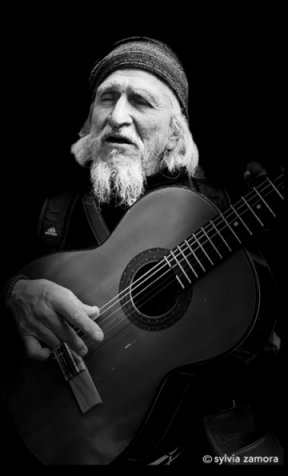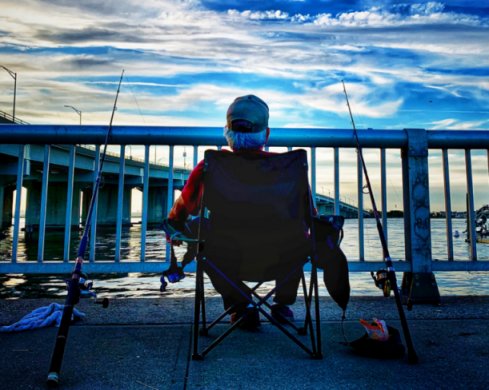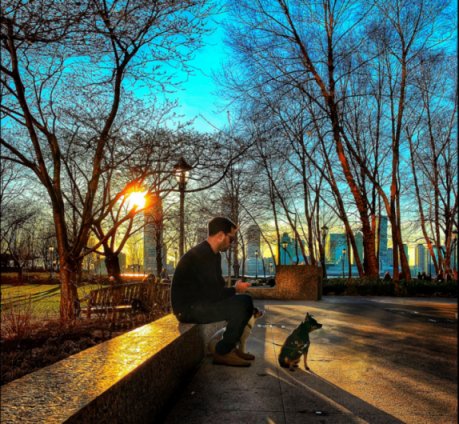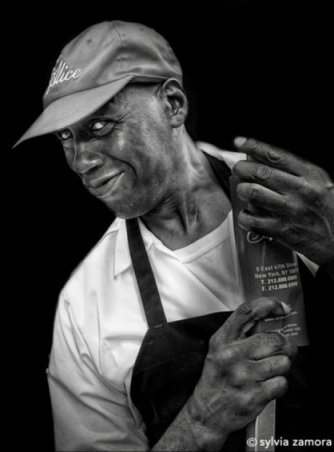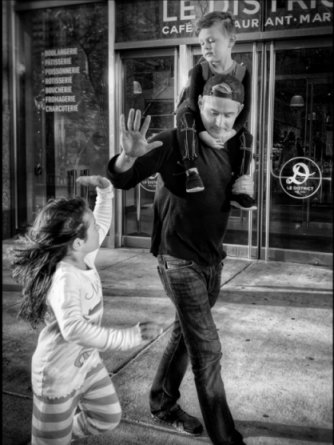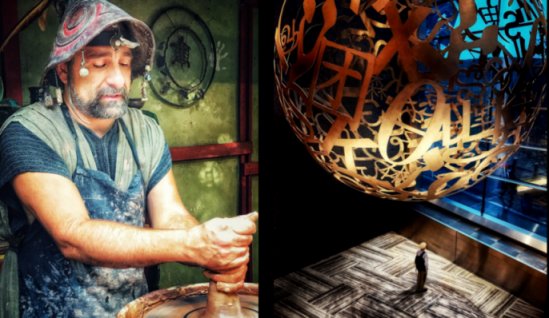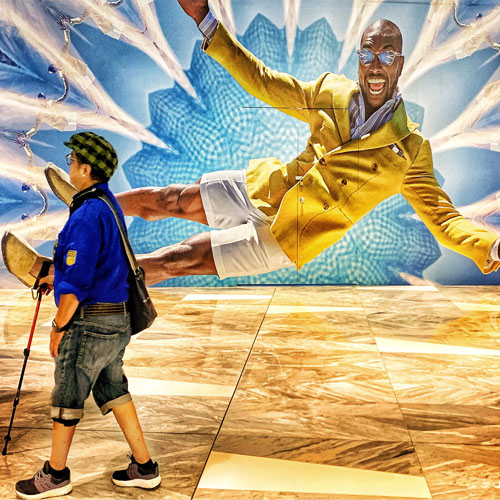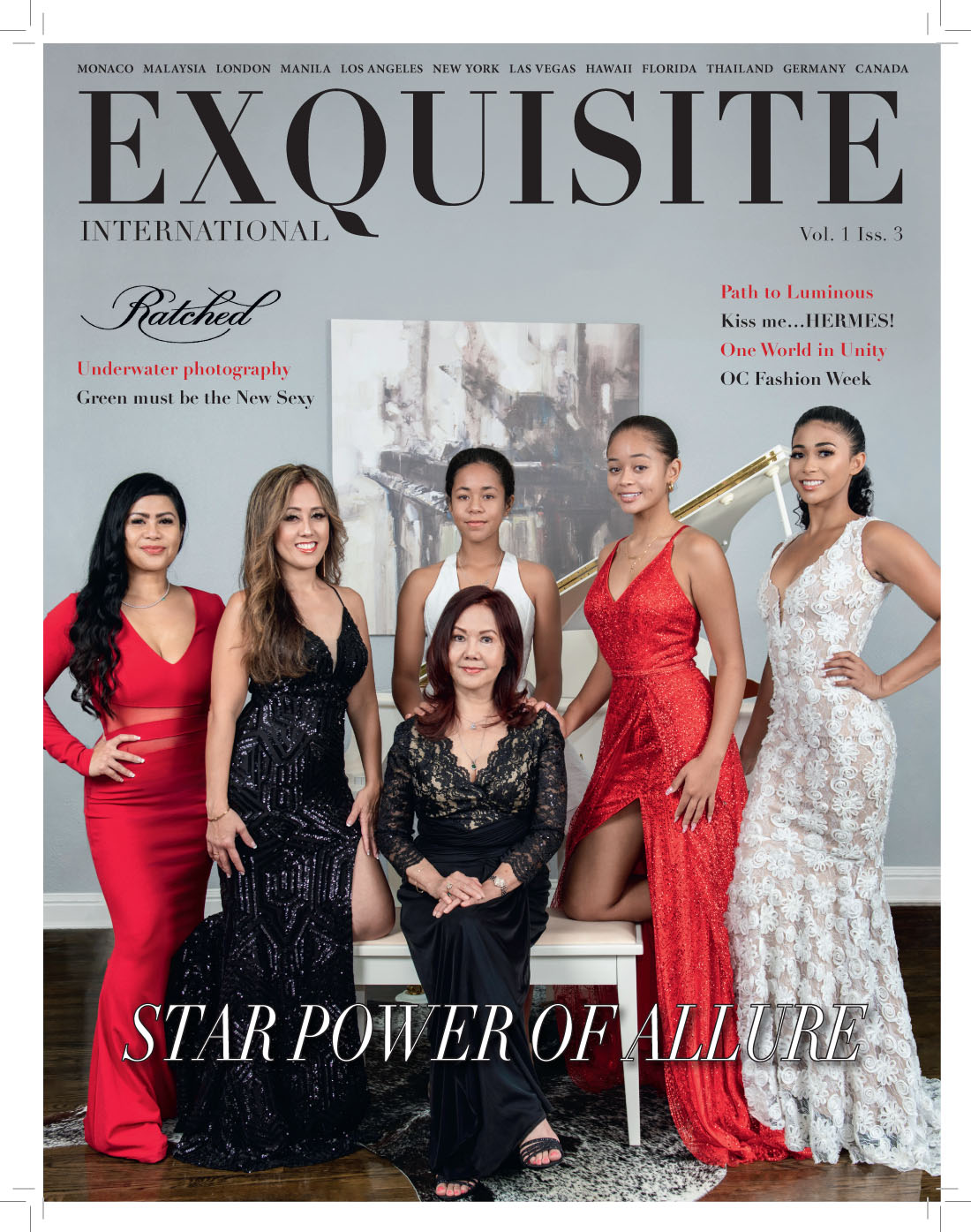OUR PINOY PRIDE IN NYC
In the late 90’s, the male-dominated film and advertising industry of the Philippines recognized Sylvia Zamora as the First Female Camera Person in Animation and eventually the First Female Director of Photography (Cinematography) in the country. Her trailblazing attitude and commitment to excellence garnered her the Best in Cinematography for Public National Awareness TV Commercials in her first year of training. Her success in this field paved the way for other females to pursue a career in cinematography. When she moved to New York City 14 years ago, the energy and diversity of the city ignited her passion for Street Photography.
After purchasing her iPhone X last year, Sylvia is once again challenging the myth that only DSLR photos are worthy for entries to competitions. As a street photographer/artist, she is one of social media’s shining stars in Facebook photography groups and Instagram street photography hubs. She competes head on with DSLR entries and wins competitions, frequently gets featured in group covers and just recently, a winner of the Master Class Competition for International Amateur Street Photography. After racking up awards practically on a daily basis, her followers/ fans no longer apologize for posting “just an iphone or mobile photo”.
As a Psych major at heart, I was excited to be able to get to know the woman behind the lens. I wanted to know what, why and how she is able to pack a dramatic and emotional punch in every cell phone image she captures. As a photographer, I feel very privileged to have someone like Sylvia Zamora to inspire me in my own photographic journey.
Audrey Dattalo: Which of your photo would you consider represents you as an artist the most? Why?
Sylvia Zamora: What would represent me the most is… DRAMATIC LIGHTING. As a Cinematographer, I loved lighting with ONE LIGHT SOURCE, ONE KEY LIGHT, just like the photo below. That one key light will give me the very strong highlights I want and let the rest of the ambient light bounce back to my subject’s face. Any nook and cranny light would flow to, in its own natural way, I let the shadows breath a life of their own, I let black go black and let the rest blend in and complete the drama.
AD: Do you consider yourself more of a cerebral or visceral photographer?
SZ: Definitely Visceral! Doing Street Photography is totally about what’s in your gut feeling, your emotions, your instinct and your vision. You look, you pause, you wish, you pray and almost expect what may transpire right in front of your very eyes. Doing Street for so many years now, one begets that gut feeling, almost anticipating and know that everything happens in a split second. Somehow, someway… I feel, that the magic moment is about happen.
AD: Every photographer has his/her holy grail. What type of subject or scene has eluded you in your photography so far?
SZ: Hmmmnnnnn, this is not an easy question when doing Street is almost always a flash of the moment incident, just like doing photo journalism or documentary photography, what happens right in front of your very eyes is what one captures. BUT, to answer that question… I wish I were here during the 9-11 tragedy or the like scenario. To be in the epicenter of a SUPER INTENSE, emotional, dramatic setting where one is able to capture grief, shock, sadness, madness, tears, disbelief, manic confusion, FEAR, life & death in the RAW!!!! It may seem morbid that I dream of this milieu but street photographs of past wars, as a child flipping through LIFE magazine, I was totally engrossed and in awe of seeing those raw emotions captured on black & white grainy prints. I would stare at people’s faces, flip each page over and over and over again, I would look at people in the background and “feel” what they’re feeling, I can actually “touch” fear in the photos I were staring at, I can feel the tremors of devastation, feel their wet faces filled with tears, feel their pain & sorrow with loss of their loved ones, like I’m actually transported inside the photograph and becoming a part of that war… THIS scenario is my utmost holy grail in photography. It has eluded me yes, but I also say, thank God it has…
AD: Was your street photography style influenced by other artists? Who would you say has helped shaped or influenced your style the most?
SZ: I always had Annie Liebowitz as my idol when I started photography and specialized in Portraiture. But now, doing Street is a whole new world from the glamour shots I started off with. Now, because of your question #3, you have unearthed the REAL reason why I love Street! You have awoken the subconscious brain of that little 8 year old child who had spent hundreds of hours staring, studying, feeling, ogling, totally mesmerized and tantalized with all those black and white images in Life Magazine and National Geographic of wartime street photos… thus I would say, Nick Ut, Nguyen Ngoc Loan to say a few, as my idols of Street. I certainly do not have their style in my photos, but their photos influenced me to shoot Street, to shoot life, to tell a story, to capture moments, to capture feelings, to focus on people’s eyes and feel what’s inside of their heads, to be where humanity is and be a part of their lives, to capture monumental and insignificant moments as it happens right before my very eyes.
AD: Before you click your shutter, what did you look for and what did your eyes finally see behind the lens?
SZ: First thing I always see is the cinematic beauty of a shot. My background in being a Director of Photography (Cinematographer) has trained me good on this. LIGHTING is the first impression that would make me stop for a photo. When it’s impressive at first glance, the surrounding will be my second factor, which is the presence of people or a person. Minimalism in my photos is almost always a signature of mine. A single person is usually what makes it cinematic because it’s clean, artistic and simple, works best for an impressive artistic shot. Focus on one’s photograph is easier too when there is no clutter in the background. I walk by, then walk back because I saw something beautiful in my head. It takes a second or two for my brain to digest the vision, the feet are faster than my brain thus I walk by and walk back is almost always what happens. What I see in the lens, the brain and the eyes saw it first, clicking away is just an act of putting it all together into film.
AD: If money where no object, please describe your ultimate setting for street photography.
SZ: I’d go to war torn cities and document the devastation and the plight of the city and its people. I’d go to where the “natives” of a town live and document their everyday lives. I’d go to Vietnam, Africa, China, Egypt, Syria, India, Turkey, Afghanistan, to name a few. I want to be where no one has ever been to shoot, I’d go to every nook & cranny of small towns and remote areas. To shoot life in the raw in war torn cities of the world is the ultimate setting for me.
AD: I noticed you tend to post black and white more often than colored photos. Why?
SZ: I see more drama in B&W than I do in Color. There is more challenge in presenting an awesome image in B&W than there is in Color. You think more. You study the photograph deeper. You nitpick on details more. You look for highlights, is there enough light, shadows and contrast and ask yourself, is the photo “alive” enough? Is it vibrant enough? Is it vivid enough? Is it fascinating or dull? Are the blacks black enough or too deep? Are the grays too overpowering or do the whites look like grays? Is the white too white that it kills half the image? Is it balanced or not? For me, a B&W photo is like a study of a painting on canvas, where you try to analyze the meaning and the message of an artist. Color is natural, it’s what every single human being lucky enough to be born with the gift of sight, sees. It’s beautiful yes, but not enough drama for me. For someone to say your B&W photo is beautiful is much more satisfying than having the same comment on a color photograph of mine because the road to doing it right in B&W is a much harder trek than doing it right in Color.
AD: As I scrolled down your gallery on Instagram, I noticed a shift in your photos this year, more energetic subjects. Plus, you’ve seemed to have narrowed the distance between you and your subjects. Why do you think this year’s work is subtly different?
SZ: A very observant comment you have here, because you’re absolutely right. I’ve gone more “personal” this year. Going as minimalistic and as simple as I can. Doing a wide shot in Street is too busy for me. If you notice, I try my very best to exclude as much busy street background on my pictures now, or most specially, too many people! It’s too distracting. I want to focus more on the message of my photographs, the clarity of emotions and that split second once in a lifetime click of a capture in close up or half body shots. It should show more the story of human interest, more of feelings, more of character, more the story of my unknown subject – the clarity in his eyes and the lines of his face, I ask myself “what are you going through today?” “what’s on your mind?” I want to focus more on the human interaction of people on people, which is what’s most important for me in doing street… thus, this year has emboldened me to go closer, to be more intimate, to invade their personal space more and be daring enough to get caught (a lot of times now! Lol), to move in tighter, to see their eyes, to see their soul, to see their heart.
AD: How much of your street photography uses your broad experience in advertising and animation?
SZ: Hhmmmnnnnn I don’t think doing street has any relation in Animation, mainly because I was not an Animator but a Camera Person. An Animator would be a great Street Photographer as they literally create stories, something from nothing but a blank sheet of white paper. A camera person in Animation is but a robot whose movements are controlled by the worksheet in front of us. In advertising, it would be the intense discipline and focus on detail which is exactly what I implement on all my photos. Lighting comes from my style of cinematography as Director of Photography.
AD: NYC is divided into neighborhood sections, each with their own distinct personalities. Which area is your favorite to photograph and why?
SZ: Definitely the Diamond District (which is 80% of my photos) is number one on my list, where the Hasidic Jews are predominantly the most interesting personalities in the street. I find so much challenge shooting them as they hate being photographed! The more they say NO, the more I do. The more they get annoyed with me, the more photos I take of them. I might practically end up having enough photos for a book compilation of this YENTL series and have it printed, much to their dismay… The next sections are: Chelsea, East Village, SoHo where you see the most colorful of personalities! I call them the no-care-in- the-world people, where they dress up like no other in the world, or rather, more out of this world, and they love it! A happy, crazy and so much in-love peoples of New York. I have yet to spend more time in Chinatown, the hustle and bustle of underground shopping. The busiest street of NYC (next to Times Square where you’ll never see me shoot) in terms of volume, action and movement… this is my next project-to-be.
AD: I know you photograph almost every day but which season or time of year would you consider your most creative? Why?
SZ: SUMMER is my most favorite time of year to shoot because the sun is shining at its brightest thus, I always have light in the most intense of strength and shadows in super high contrast and just the perfect mix of gradient gray to make it FUNtastic! That silver lining highlights on everything, on faces, clothes, hats, shoulders, legs, shoulders…EVERYWHERE! Simply beautiful! WINTER is all about gray, the most challenging season of all and yet, I find myself longing for a blizzard because it gives me the texture and drama, on people and buildings combined. The snow emits such whiteness that it acts as my bounce light for faces on a very bleary, gloomy day. FALL is absolutely about Landscape photography where nature and nature alone are so stunning, one can sometimes stand frozen in place because you are in awe of the beauty of mother earth. Such vibrant orange colors of trees and leaves all over your surroundings, wherever your eyes go, as far as your eyes could see. SPRING is interesting too because from the dreadful winter weather, you see the beginnings of green come alive from very dark, barren and dead trees.
AD: What type of street photography would you consider cliché?
SZ: Hhmmnnnnn… a very interesting question when for me, street photography has a very general and broad definition. General because it’s purely and simply candid street activities, indoor or outdoor, with or without people… Broad at the same time because it could also be landscape in nature, portraiture, or abstract art. BUT, what’s cliché is when some people consider Street Photography MUST ONLY include people! That definition is VERY old school, very boxed in and very unimaginative!
AD: Is there a type of photography that you wish would go away?
SZ: Hahahahahaha this is funny because I don’t think there’s even a correct answer to this! But, just for the heck of it, as my OWN personal opinion… I would say, Still Life and Product Shoots? Interesting yet boring at the same time. I say this because it’s a controlled environment where everything is planned, fixed, arranged, cleaned, redone when wrong, reshoot to make it even more right. Too rigid, too many rules, too exact, where perfection is a must but then, in whose eyes will it ever be perfect? Definitely not my cup of tea, even if I did this for about 4 years in an Advertising Agency… it’s definitely not something I would ever go back doing again. But then again, it’ll never go away because this is where the money is for photography, Advertising, the cash register for all photographers. Now I know why I’ll never be rich in photography, lol….
AD: What in your opinion makes for a cool street photo?
SZ: Action, drama, lighting, extreme angle and an awesome story. Combine all these in ONE single photo would be my most uber cool street capture! And then again, this is really a tough question. I see hundreds of street photos in FB & Instagram on a daily basis and yet, there are hundreds I see having that WOW factor. What is it in them that makes it awesome? I don’t know, it’s difficult to categorize it in words or in its technical aspect, it has a life of its own, like the photograph is surreal, unusual, out of this world. These would be my own personal basis of what a cool street photo would be when seeing it in other photographers captures.
AD: Was there ever a time when you felt your artistic muse has left you? What did you have to do to get her back?
SZ: Oh yes it has happened, not once, not twice, not thrice but several times in my lifetime. It can happen today or tomorrow or right this very moment! In the beginning as a newbie, I panicked! Then in time, through the years, I’ve just learned to just let it be. It comes back no matter what. It even took years for it to come back to me! Now, after all these years, I know… When photography is inside of your heart and soul, Ms. Artistic Muse will always be awaken when she decides to sleep every so often in my life, like a bear in hibernation. Then! She comes back with a vengeance of a hungry animal ready to devour the world.
AD: Thank you so much Sylvia. Looking forward to seeing more of your works in an exhibit sometime soon, right?
SZ: From your lips to God… Thank you so much Audrey. I’m extremely honored to have had this opportunity.
